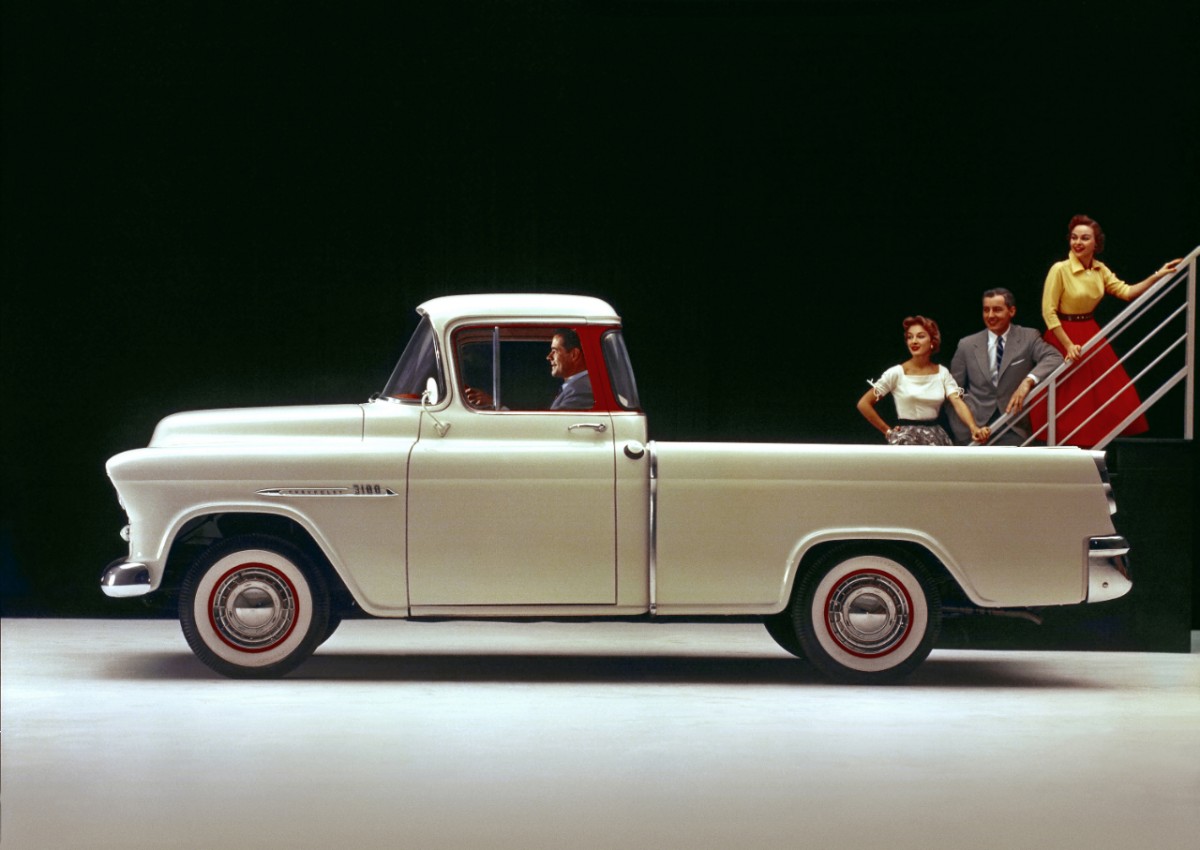The Chevrolet Cameo Carrier may not be a widely remembered model name, but along with its even rarer GMC Suburban counterpart, they paved the way for the look of most pickup trucks on the road today.
Built for just three years between 1955-1957, the Cameo was the first pickup with smooth rear fenders that carried the lines of the cab all the way to the rear bumper, in place of the exposed wheel wells of virtually every pickup truck up to that point. Not only the first pickups to present a more car-like appearance, the Cameo and Suburban were also the first trucks available with more creature comforts in the cabin and liberal use of chrome trim to dress them up.
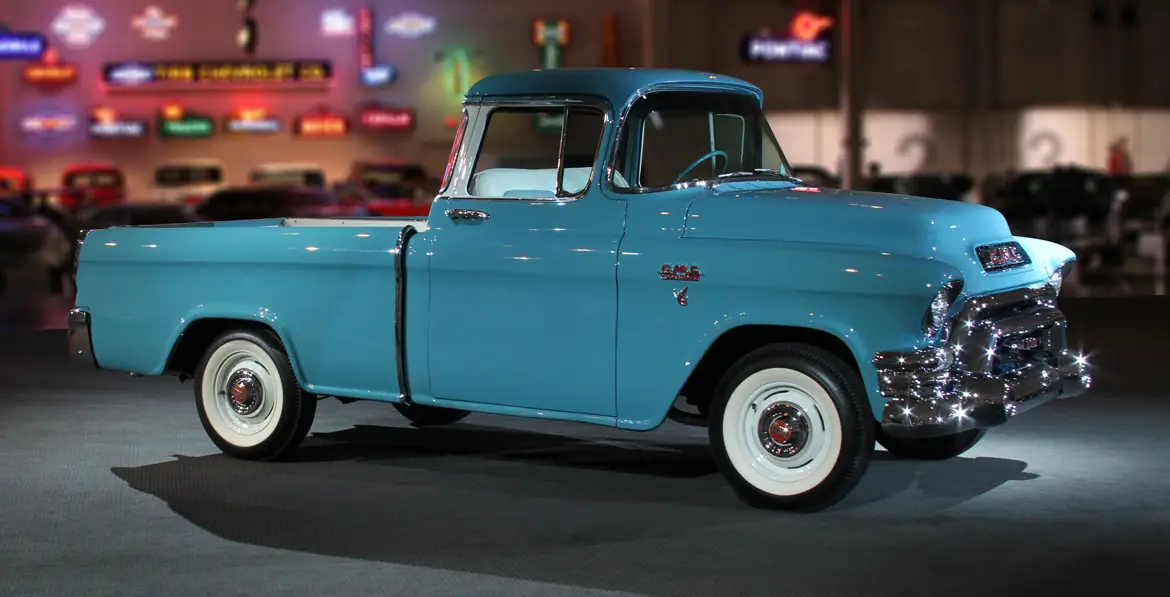
An interesting tidbit is that engineers were concerned about weakening the pickup truck’s structure by replacing the conventional bed with the new one, so the Cameo and Suburban fiberglass panels were simply mounted over the existing fenders and tailgate.
Outside, the Cameo was dressed up with two-tone paint, chrome bumpers and trim, full wheel coves, and white wall tires. Choosing a color was easy the first year, as the only choice was Bombay Ivory with red trim. Other color choices followed later on in the run.
Part of the all-new “Task Force” line of Chevrolet trucks introduced for 1955, the Cameo was also the first Chevrolet pickup available with a V8 engine along with the standard six-cylinder. While the Cameo got a 145-horsepower, 265-cubic-inch V8, the even more upscale Suburban used a 155-cubic inch, 155-horsepower engine shared with Pontiac.
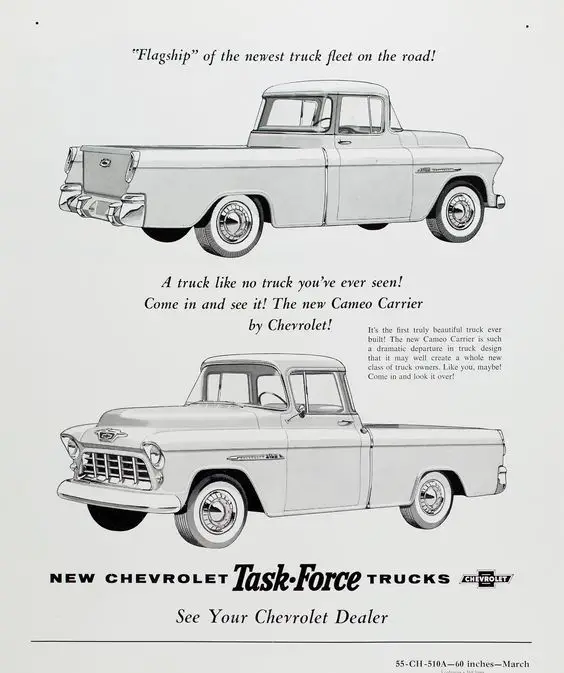
Along with other Task Force pickups, the standard straight six got a power boost in 1955, going to 123 horsepower from the 122 in 1954. Transmission choices with either engine included a three-speed manual with or without overdrive, a four-speed manual, or an automatic. Both trucks had a 6.5 foot bed and rode on a 144-inch wheelbase.
Inside, designers pulled out all the stops, with such decadent features as dual padded sun visors, armrests, two-tone upholstery, and chrome knobs. And along with other redesigned pickups for 1955, power brakes and steering were available for the first time.
The Cameo and Suburban were a visionary idea, to be sure, but they were also something of a gamble for General Motors. Expensive to produce, the Cameo carried a price premium of about 30 percent compared to a conventional Chevy pickup of the era. Not many traditional commercial and agricultural buyers were likely to pay a third again as much for a gussied up look that did nothing to carry more lumber to the job site, or manure to the fields.
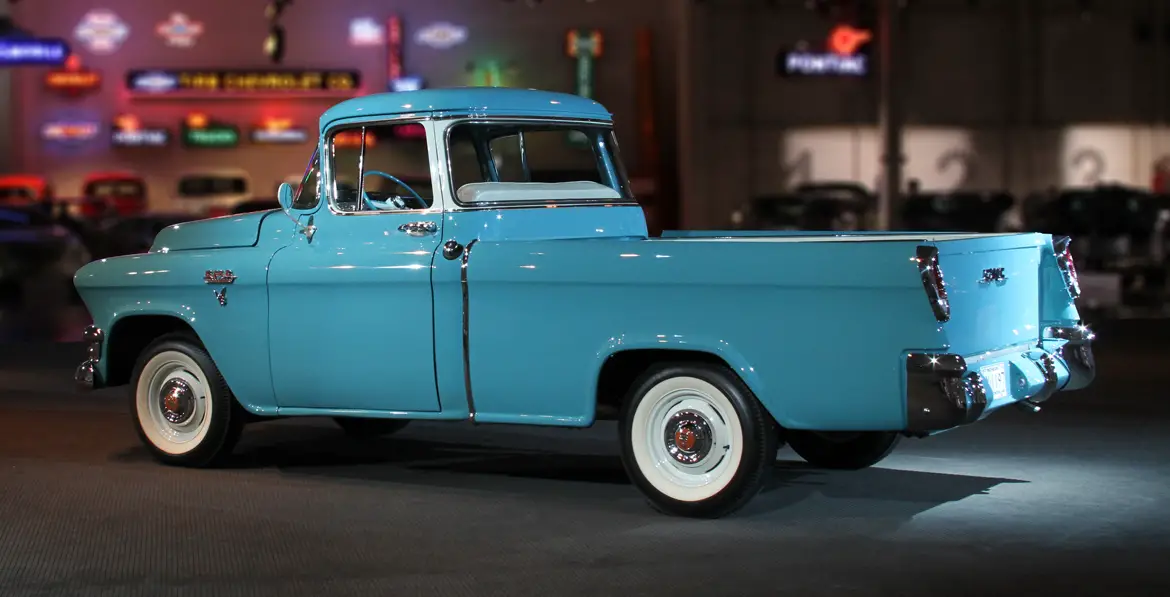
But sales were strong enough that competitors soon followed, along with the even more car-like Ford Ranchero in 1957, and Chevy’s own El Camino in 1959. Both were based on contemporary station wagon designs.
By 1960, Dodge, Ford, and International had joined General Motors in making smooth-sided pickup trucks, although by then all used steel beds rather than fiberglass. Pickup trucks had begun the transition from strictly work vehicles to family vehicles and daily transportation, with more car features and luxury trims steadily added over the years.
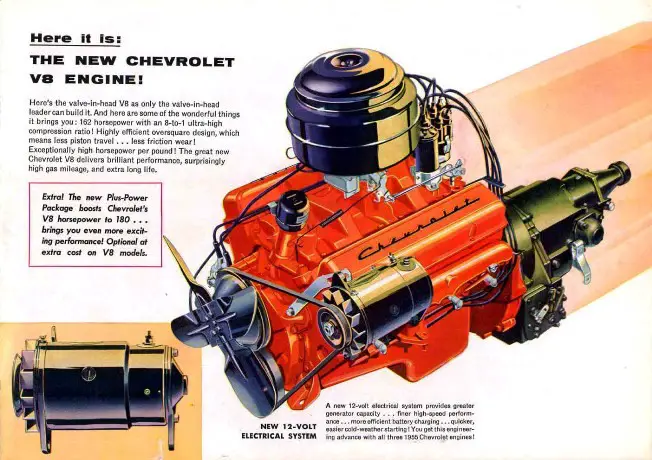
It is a trend that continues today, but it was the Chevrolet Cameo and GMC Suburban that got things going. Both are increasingly popular with collectors, and their scarcity and significance help command a price premium over other pickups of the period. Fewer than 9,000 Cameos were reportedly built between 1955 and 1957. The Suburban was never intended as a volume model, and was more of a promotional piece to draw showroom traffic. Only offered for the 1955 model year, it is said that just 300 or so examples were built.

